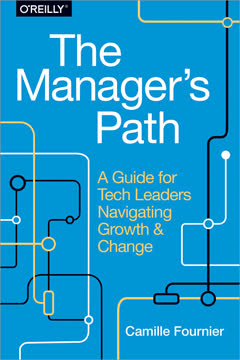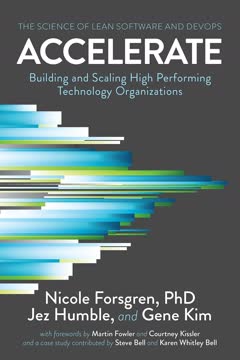Key Takeaways
1. Architecting for innovation: Enable change through autonomous services
Architecture is the art of defining boundaries within a system and the science of placing bulkheads along these boundaries.
Autonomous services are the cornerstone of an architecture that enables change. They own all the resources they need to continue functioning even when other services cannot. This approach creates fortified boundaries that allow teams to innovate independently, reducing lead times and increasing the pace of innovation.
Key aspects of autonomous services include:
- Command, Publish, Consume, Query (CPCQ) flow
- Asynchronous inter-service communication
- Inbound and outbound bulkheads
- Polyglot persistence and programming
By embracing autonomous services, organizations can break down monolithic systems into more manageable, flexible components that can evolve independently. This modular approach allows teams to experiment, learn, and adapt quickly without fear of breaking the entire system.
2. Event-first thinking: Trust facts and embrace eventual consistency
Events are not ephemeral messages; they are facts that represent the system contract.
Event-first thinking revolutionizes how we design systems by focusing on verbs (actions) rather than nouns (entities). This approach treats events as immutable facts stored in an event lake, providing a complete audit trail and enabling system-wide event sourcing.
Benefits of event-first thinking:
- Decouples services and allows independent evolution
- Enables reactive and evolutionary systems
- Supports idempotence and order tolerance
- Facilitates easier debugging and system analysis
By embracing eventual consistency, systems become more resilient and scalable. The event hub acts as a central nervous system, allowing services to react to changes asynchronously and maintain their own materialized views of data.
3. Turning the cloud into the database: Fight data gravity with CQRS
Data is an information system's most important asset. It must be accurate. But instead of controlling data too tightly, we want to embrace the fact that we live in an eventually consistent world.
Command Query Responsibility Segregation (CQRS) pattern helps fight data gravity by separating read and write models. This approach allows services to maintain their own optimized views of data, reducing coupling and improving performance.
Key concepts in turning the cloud into the database:
- Data life cycle architecture (Create, Use, Analyze, Archive)
- Materialized views as inbound bulkheads
- Single table design for operational performance
- Change Data Capture (CDC) for event sourcing
By distributing data across services and leveraging cloud-native storage solutions, systems can scale more effectively and adapt to changing requirements without being held back by monolithic databases.
4. Taming the presentation tier: Embrace micro frontends for flexibility
The presentation tier is a battleground. It always has been. It always will be.
Micro frontends break down monolithic user interfaces into independently deployable components, allowing teams to innovate and evolve different parts of the UI independently. This approach aligns with the backend architecture, creating full-stack autonomous teams.
Benefits of micro frontends:
- Isolates changes and reduces risk
- Maximizes potential for lazy loading
- Supports multiple frameworks and versions
- Enables offline-first and progressive web app (PWA) capabilities
By adopting micro frontends, organizations can create more responsive, resilient, and adaptable user interfaces that can evolve alongside backend services and business requirements.
5. Backend for Frontend (BFF) pattern: Optimize for specific user activities
A BFF service is responsible for a single user activity and eliminates distractions and competing demands.
The BFF pattern focuses on creating tailored backend services for specific frontend applications or user activities. This approach optimizes the API for particular use cases and reduces coupling between different parts of the system.
Characteristics of BFF services:
- Owned by the frontend team
- Implements CQRS for data access
- Provides a trilateral API (synchronous, listener, trigger)
- Supports different types of activities (Task, Search, Action, Dashboard, Reporting, Archive)
By implementing BFFs, teams can create more responsive and efficient user experiences while maintaining the flexibility to evolve different parts of the system independently.
6. External Service Gateway (ESG) pattern: Create anti-corruption layers
The ESG pattern works at the boundary of the system to provide an anti-corruption layer that encapsulates the details of interacting with other systems.
External Service Gateways act as adapters between the core system and external systems, including third-party services, legacy systems, and other subsystems. This pattern helps maintain the integrity of the core domain model and provides flexibility in integrating with various external systems.
Key aspects of ESGs:
- Ingress and egress flows
- Semantic transformation between internal and external models
- Support for various integration scenarios (e.g., webhooks, CDC, direct SQL)
- Handling of shared secrets and API keys
By implementing ESGs, organizations can more easily evolve their core systems while maintaining compatibility with external systems and protecting against external changes.
7. Control Service pattern: Orchestrate business processes with events
Control services act as mediators between collaborating boundary services. They only consume and produce events; they do not expose a synchronous interface.
The Control Service pattern enables the implementation of complex business processes and rules using event-driven orchestration. This approach centralizes control flow logic while maintaining the benefits of loose coupling between services.
Components of Control Services:
- Collect, correlate, and collate events
- Evaluate rules and conditions
- Emit higher-order events
- Implement time-based logic and expiration
Control Services support various scenarios, including business process orchestration, sagas for distributed transactions, complex event processing (CEP), and ACID 2.0 calculations for event sourcing snapshots.
8. Designing for resilience: Implement sagas and ACID 2.0 properties
To support these scenarios, we turn to an approach dubbed ACID 2.0. This new version of the classic acronym stands for Associative, Commutative, Idempotent, and Distributed.
Resilient systems must handle failures gracefully and maintain consistency in distributed environments. Two key patterns for achieving this are Sagas and ACID 2.0 properties.
Sagas:
- Break long-lived transactions into atomic steps
- Implement compensating transactions for rollback
- Use abort events to signal failures
ACID 2.0 properties:
- Associative: Result independent of grouping
- Commutative: Result independent of order
- Idempotent: Duplicate processing doesn't change result
- Distributed: Properties hold across multiple nodes
By implementing these patterns, systems can maintain consistency and recover from failures in distributed, eventually consistent environments.
9. Observability and governance: Foster a culture of robustness
Observability enables continuous governance.
Observability is crucial for understanding system behavior, identifying issues, and continuously improving performance. Coupled with automated governance practices, it creates a culture of robustness that enables teams to innovate with confidence.
Key aspects of observability and governance:
- Work metrics vs. resource metrics
- Real User Monitoring (RUM) and synthetics
- Continuous auditing and security monitoring
- TestOps for ongoing system validation
By implementing comprehensive observability and governance practices, organizations can maintain system health, security, and compliance while enabling teams to move quickly and confidently in a dynamic environment.
Last updated:
FAQ
What's Software Architecture Patterns for Serverless Systems about?
- Focus on Serverless Architecture: The book delves into designing software systems using serverless technologies, highlighting events, autonomous services, and micro frontends.
- Continuous Delivery Enablement: It aims to assist teams in delivering business value continuously by supporting rapid experimentation and adaptation to change.
- Comprehensive Reference: Serving as a guide for architects and developers, it offers patterns and best practices for scalable and resilient serverless systems.
Why should I read Software Architecture Patterns for Serverless Systems?
- Practical Insights: Authored by John Gilbert, the book is rich with practical insights drawn from over 30 years of experience in software architecture.
- Modern Relevance: As cloud technologies become more prevalent, understanding serverless architecture is crucial for competitive and efficient software development.
- Empowerment for Teams: It provides strategies to empower autonomous teams, enabling faster innovation and solution delivery without traditional architecture bottlenecks.
What are the key takeaways of Software Architecture Patterns for Serverless Systems?
- Architect for Innovation: Emphasizes that architecture should enable change, allowing teams to continuously deliver value and adapt to evolving business needs.
- Event-First Approach: Introduces treating events as first-class citizens, creating a more flexible and resilient architecture.
- Autonomous Services: Highlights the importance of designing autonomous services with fortified boundaries, allowing independent team operation and reduced lead times.
What is the event-first approach in Software Architecture Patterns for Serverless Systems?
- Focus on Events: Prioritizes events over traditional data models, treating them as facts representing the system's state.
- Decoupled Communication: Allows services to communicate asynchronously, reducing dependencies and enabling innovation without tight coupling.
- Enhanced Observability: Supports better observability and auditing, making it easier to track changes and system behavior.
How does [Author] define autonomous services in Software Architecture Patterns for Serverless Systems?
- Self-Sufficient Services: Designed to operate independently, managing their own data and functionality without relying on other services.
- Fortified Boundaries: Emphasizes creating strong boundaries to limit the impact of changes and failures, allowing rapid innovation.
- Empowerment of Teams: Promotes a culture of accountability and agility by enabling teams to own their services, essential for modern software development.
What are micro frontends in Software Architecture Patterns for Serverless Systems?
- Decomposed Frontend Architecture: Breaks the frontend monolith into smaller, independently deployable applications, allowing simultaneous work on different UI parts.
- Seamless User Experience: Despite being separate applications, they provide a cohesive user experience, making it feel like a single application.
- Independent Deployment: Each micro frontend can be developed, tested, and deployed independently, accelerating development and reducing lead times.
What is the significance of event sourcing in Software Architecture Patterns for Serverless Systems?
- Foundation for Consistency: Supports eventual consistency, maintaining a reliable audit trail of changes.
- Flexibility and Resilience: Treating events as first-class citizens allows systems to evolve easily, enabling new features without disrupting existing functionality.
- Historical Data Access: Facilitates easy access to historical data, invaluable for debugging and analytics.
How does [Author] define the CQRS pattern in Software Architecture Patterns for Serverless Systems?
- Separation of Concerns: Separates the command (write) and query (read) models, allowing each to be optimized independently.
- Improved Performance: Achieves better performance and scalability, particularly in high-traffic scenarios, by using different models for reading and writing.
- Event-Driven Architecture: Connects CQRS with event-driven architecture, explaining how commands can trigger events for downstream services, creating a responsive system.
What is the Backend for Frontend (BFF) pattern in Software Architecture Patterns for Serverless Systems?
- User-Centric Design: Focuses on creating a dedicated backend service for each frontend application, optimizing user experience by tailoring responses.
- Decoupling Frontend and Backend: Allows teams to work independently and iterate on their components without impacting each other.
- Improved Performance: Reduces the amount of data sent to the frontend, enhancing performance and responsiveness.
How does [Author] suggest handling legacy systems during migration in Software Architecture Patterns for Serverless Systems?
- Strangler Pattern: Allows gradual migration by building new features around existing legacy systems without disrupting current operations.
- Event-First Migration: Involves wrapping legacy systems with an anti-corruption layer that produces and consumes events, enabling synchronization between old and new systems.
- Seamless User Experience: Enables users to interact with both legacy and new systems concurrently, making the migration process less disruptive.
What are the benefits of using feature flags in Software Architecture Patterns for Serverless Systems?
- Controlled Rollouts: Deploy code to production without activating it immediately, enabling controlled rollouts and reducing the risk of bugs.
- User Segmentation: Allows teams to segment users for testing new features, gathering feedback from beta users before a full rollout.
- Risk Mitigation: Decouples deployment from release, helping mitigate risks associated with changes, ensuring issues can be addressed without affecting all users.
How does [Author] address the concept of continuous testing in Software Architecture Patterns for Serverless Systems?
- Shift-Left Testing: Emphasizes testing throughout the development process, not just at the end.
- Automated Testing: Advocates for automating unit tests, integration tests, and contract tests to maintain high quality and reduce lead times.
- Feedback Loops: Integrates testing into the CI/CD pipeline, providing immediate feedback on changes for quicker iterations and improvements.
Review Summary
Readers generally praise Software Architecture Patterns for Serverless Systems for its innovative ideas on event sourcing in distributed systems. They appreciate the author's insights and experiences. Some found the book structure challenging, with frequent references to other chapters. While the serverless focus is debated, the book offers valuable perspectives on modern software development. Readers suggest more comprehensive practical examples could improve understanding, especially for those new to large-scale cloud architecture. Despite these minor critiques, the book is highly recommended for its fresh ideas and architect's point of view.
Similar Books










Download PDF
Download EPUB
.epub digital book format is ideal for reading ebooks on phones, tablets, and e-readers.




